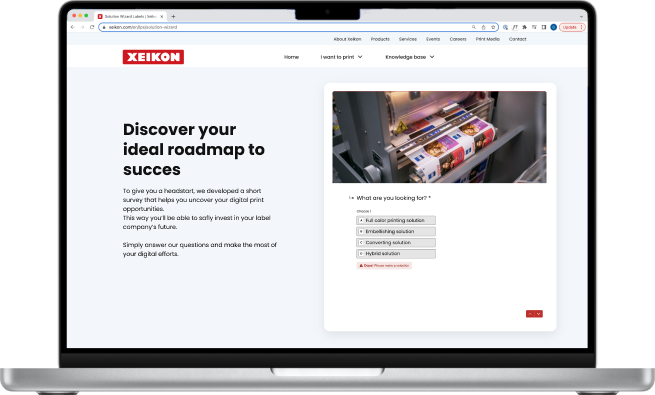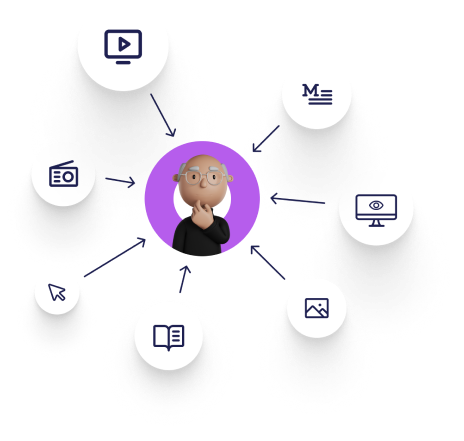Laying the groundwork
Website
At the core of any successful digital marketing strategy lies a website that delivers an optimal user experience. A website must load quickly, respond seamlessly, feature engaging visuals, be easy to navigate, and, above all, make it simple for users to find what they're looking for
In the case of Xeikon, a leading digital printing pioneer with a vast range of solutions for various printing applications, crafting an effective website involved careful attention to the information architecture. This approach led to the development of six site-in-sites, ensuring that users can effortlessly navigate and access the information they need. As a result, Xeikon's website delivers a seamless and intuitive user experience, driving engagement and conversions with ease.
Engineered marketing
In addition to the already existing downloadable resources such as whitepapers and product sheets, we developed a suite of conversion tools to enhance the user experience. Among these tools is the Opportunity Survey, which identifies potential opportunities for printing businesses seeking to transition into digital printing or those already involved in it, with just a few targeted questions.
These tools offer great value to prospective customers while enabling us to collect data for lead scoring, thereby simplifying the process of differentiating between high-potential and low-potential leads for our marketing and sales teams.




 To conclude, we were able to deliver on our promise of transforming Xeikon's dreams into fireworks by providing them with a lead generation machine within a year of launching their new website.
To conclude, we were able to deliver on our promise of transforming Xeikon's dreams into fireworks by providing them with a lead generation machine within a year of launching their new website.

